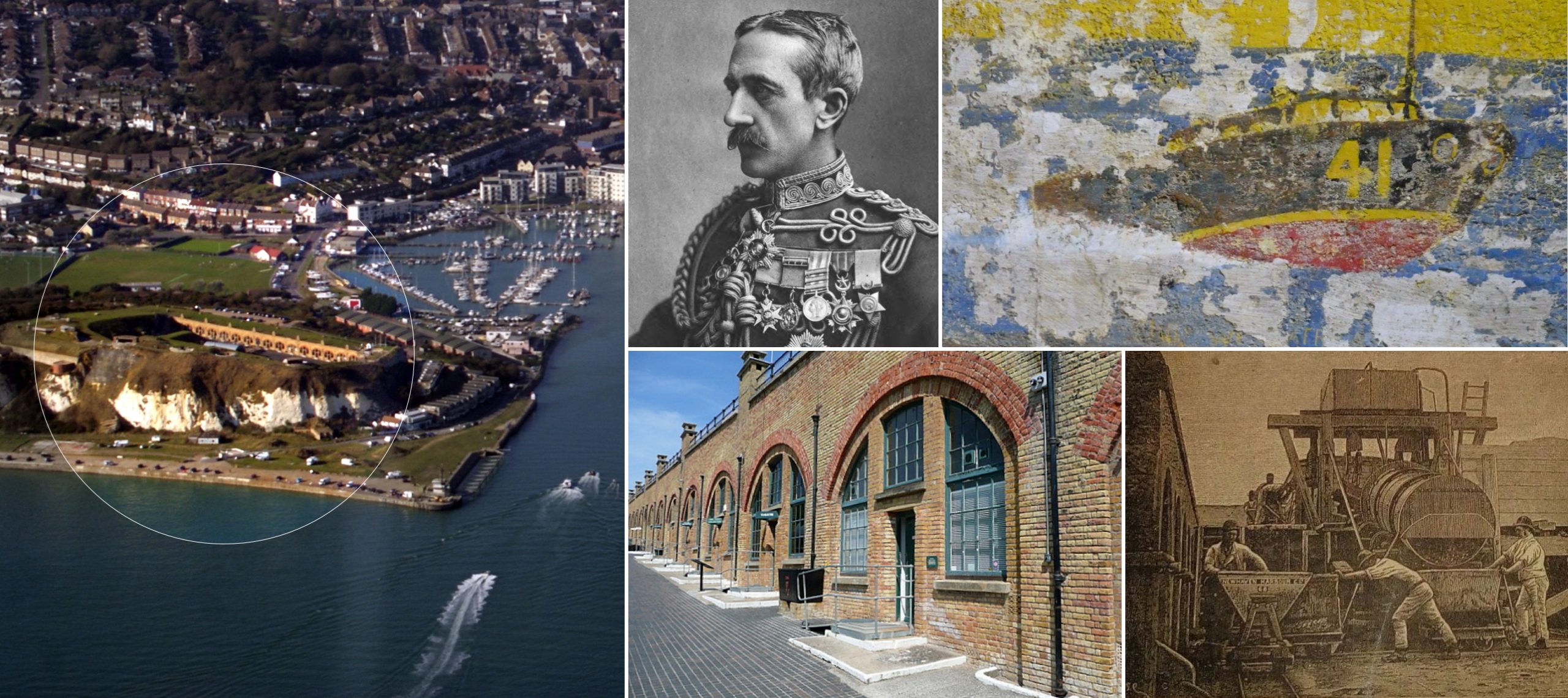Game writer, experience designer, digital dramaturg, founder and Creative Director of the AR studio, Playlines, Rob Morgan gives insights into his practise as a writer and content developer of Augmented Reality, highlighting the role Hexology plays in creating layers of meaning in digital public space and its value to community.
Cutting my teeth at PlayStation as the writer of the groundbreaking Wonderbook AR titles for the PS3 in 2012, I’ve been a writer and content developer for Augmented Reality for over a decade. I’m now a lecturer in narrative design for AR, immersive technology and for whatever the ‘Metaverse’ turns out to be. In my time I’ve seen buzzwords move from AR to Mixed Reality to XR and back again; and all of this experience has left me with a pretty broad and fluid definition of what Augmented Reality actually is.
AR encompasses many different technologies, with many different ways of delivering and relating to content. For me personally, what matters most is that AR allows us to deliver content in a highly contextual way; in a way which alters the way a person relates to the world around them. Here’s an example:
Augmenting Meaning onto Places
Let’s say you’re visiting a familiar location – your favourite park, public square, or just the streets along your ordinary walk to the shops. Imagine if, as you move through that space, you could contextually see and hear about an extraordinary historical event which took place right where you are – something you had no idea about previously. Whether that event was a famous scandal, a historic heist, or a great artist’s moment of inspiration – this content will change the way you experience that place as you move through it. It’ll activate your imagination. The chances are, the next time you visit that same place you’ll remember the history beneath your feet. At which point, for me, your Reality has been Augmented.
The more contextual the information, the more locally-relevant and relatable it is and the more powerfully it can change how we feel about our places. This is why location-based digital content can have such extraordinary impact. And these days, I and the writers I help to train suddenly have all these exciting new tools to add contextual layers of information and adventure, to towns and neighbourhoods all over the world.
Which is why I was so excited to discover Hexology, the first time I’d seen a location-based content platform whose technology was ready to go!
Unlike many of the other prototypal location-based content browsers I have seen over the years, Hexology is the first time I’d seen a platform whose technology was ready to go, and whose approach realised the same excitement I feel about empowering people to add content to the digital dimension of their public spaces.
XRchiving.London Conference at King’s College London
So, I was delighted to invite Hexology to showcase at XRchiving.london at King’s College London, a first-of-its-kind conference which brought together architects and urban designers, archivists and historians, and games and experience designers like myself, to discuss the potential of location-based technology to create new kinds of Digital Public Spaces.
The conference focused on heritage and archiving, and the Hexology team went above-and-beyond to demonstrate the power of the platform, populating the newly-pedestrianised Strand-Aldwych area on KCL’s doorstep with contextual content. They have placed a diverse range of stories from the area’s rich history into statues, grade 1 listed buildings and West End theatres, which you can discover for yourself, when you visit Strand Aldwych and when using the #StrandStories hashtag.
Strand Stories: The case of Fanny & Stella
Part of the research I am doing as a Visiting Fellow at KCL is focused on the power of location-based digital media to highlight under-represented voices and historical stories just beneath the surface of urban spaces. As part of this research my studio, Playlines, collaborated with a talented bunch of KCL students to develop a prototype AR exhibit for the former Royal Strand Theatre on Surrey St. The exhibit brings to the surface the story of Fanny and Stella, two Victorian-era cross-dressers whose arrest, trial and – spoiler alert – acquittal for the crime of indecency is a landmark of London’s Queer history. Our challenge was to experiment with XR heritage information design in the AR medium and imagine what a network of intersecting XR heritage trails across Strand-Aldwych might look like.
More than just attaching a single message to a location, like a Blue Plaque on a wall, our use of AR also investigated the question of who gets to decide which messages get tagged to public space. We got to experiment with ways that location-based technology could empower people to inscribe and explore multiple different perspectives onto their public spaces without competition or contradiction.
Empowering diversity & inclusivity in digital storytelling enables stories from different perspectives to be told
Once you start digitally tagging editorial or curatorial content to an artwork, artefact or place, then you don’t have the same restrictions on wordcount or wallspace that a brick-and-mortar institution has. Most museum and gallery labels are around 55 words – and that doesn’t leave a lot of room for nuance, or for multiple perspectives. But history, and the history of places and objects, has never been so simple.
Today, museums are coming under increasing pressure from many different sides to compress complex histories and cultural considerations into single, supposedly-objective and unobjectionable curations. Yet today’s audiences are accustomed to being able to Google around and draw from a diverse range of sources to curate their own interpretations of the culture they consume. And this is the exciting bit: in the digital layer you’re not restricted to one label, one plaque, or one curation; you can create as many different interlinked ‘hyper-labels’ as there are interpretations or perspectives. Based on research I did whilst a resident at the National Gallery in 2020, I call this idea ‘Non-Zero-Sum Information Design’.
Safeguarding the future of digital public space
Now, there are potentially dystopian aspects to augmenting public space with digital content. Put into the wrong hands we know that the internet empowers people to filter their news consumption to only those sources which confirm their existing biases, even to the extent of self-radicalising. There’s a danger that digitally augmenting the world could allow people to live in increasingly isolated and incompatible VERSIONS of reality. But equally, we can’t allow the digital dimension of public space to be controlled and curated by a single monolithic entity, no matter who it is; and we can’t allow digital public space to be bought up and monopolised as advertising space in the way so many of our physical public commons have been.
I’m absolutely convinced that digital place-making will be a defining aspect of the experience for the next generation. Wearable technology will break down barriers between their ‘online’ and ‘offline’ lives. Enabling people to discover meaning in the real places around them, and to make real connections with their neighbours and fellow users of the real world, is what motivates me to research and develop in this space.
This is why I’m so excited about the development of platforms for location-based content creation, exemplified by Hexology. Because the best way to tackle these questions is to empower as diverse a range of people as possible to make their mark on their public spaces, and to make their art, their heritage and their perspective into a permanent part of the digital dimension of their neighbourhoods. That’s what Hexology enables its users to do. And its aspirations go even wider.
The Future of Hexology seen through an AR headset
Over just the next 12-24 months a a range of multi-billion-dollar XR/Mixed Reality headsets are coming down the pipeline from some of the world’s most powerful companies (including the recent stealth-announcement of a headset by Niantic, the Google subsidiary which created the first location-based AR blockbuster Pokémon Go). In one form or another, Apple Google and Meta are all putting billions behind the idea that John Hanke, CEO of Niantic, calls the ‘Real-World-Metaverse’.
It’s the concept that many of us will soon mediate the world around us in a partially-digitised way, accessing information, adventure and (most importantly for their business models), advertising. It’s a technological paradigm shift on the scale of the smartphone revolution, and it’s going to transform our experience of walking down the street.
Which is why developing the tools to discover the digital dimension of your neighbourhoods can’t just be left to the behemoths. And it’s why the Hexology platform, which already allows users to create and access place-based digital content and augmentation through an ordinary smartphone, is a key piece of the puzzle.
Just a quick browse through Hexology shows how public spaces could become sites of not just monocultural messages and carefully-worded and workshopped labels, but intersections of a multitude of perspectives, public participations, and yes, promotions. It lets us imagine a not-too-distant-future where moving through public space is also an encounter with the range of people, past and present, whose lives and perspectives make up that place.
Hexology presents a golden opportunity to lead the world
More than just a network of digital ‘blue plaques’: Hexology allows us to imagine a digital dimension which is a living, growing celebration of the UK’s incomparable heritage and diversity.
Hexology presents an opportunity here – to help establish the UK as a global leader in a new kind of digitised cultural practice, and create an exemplar of digitised public place-making, which, very soon, will be relevant to every city in the world.
This is why I am so excited to be working in collaboration with Hexology to help build AR into its platform: in order to help future users discover rich ecosystems of augmented art, comment and civic participation which present and future artists will populate into public space. With some thinkers calling time on Social Media as we know it, I’m all the more excited for location-based AR to nudge us outdoors and back into our shared spaces, reclaim places as platforms for debate, self-expression and the exploration of the history and culture that is lying just beneath our feet.
Rob Morgan is a game writer, experience designer, digital dramaturg and founder and Creative Director of the AR studio Playlines. Playlines x KCL’s Fanny and Stella AR Exhibit prototype will be showcased at the official opening of the pedestrianised Strand-Aldwych area on Dec. 6th 2022, where it will become part of the growing, enriching digital dimension of location-based content which Hexology has created across the area.




